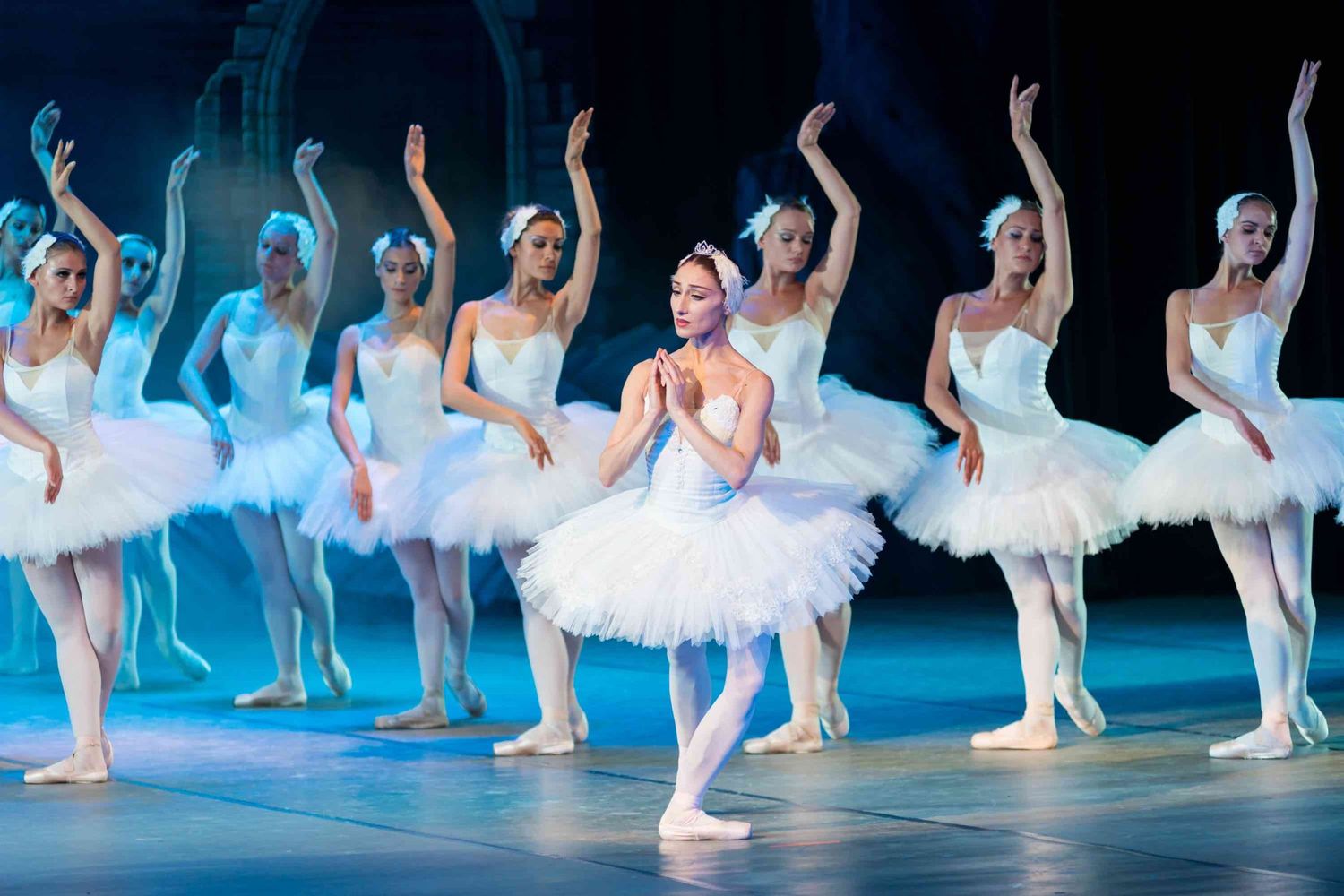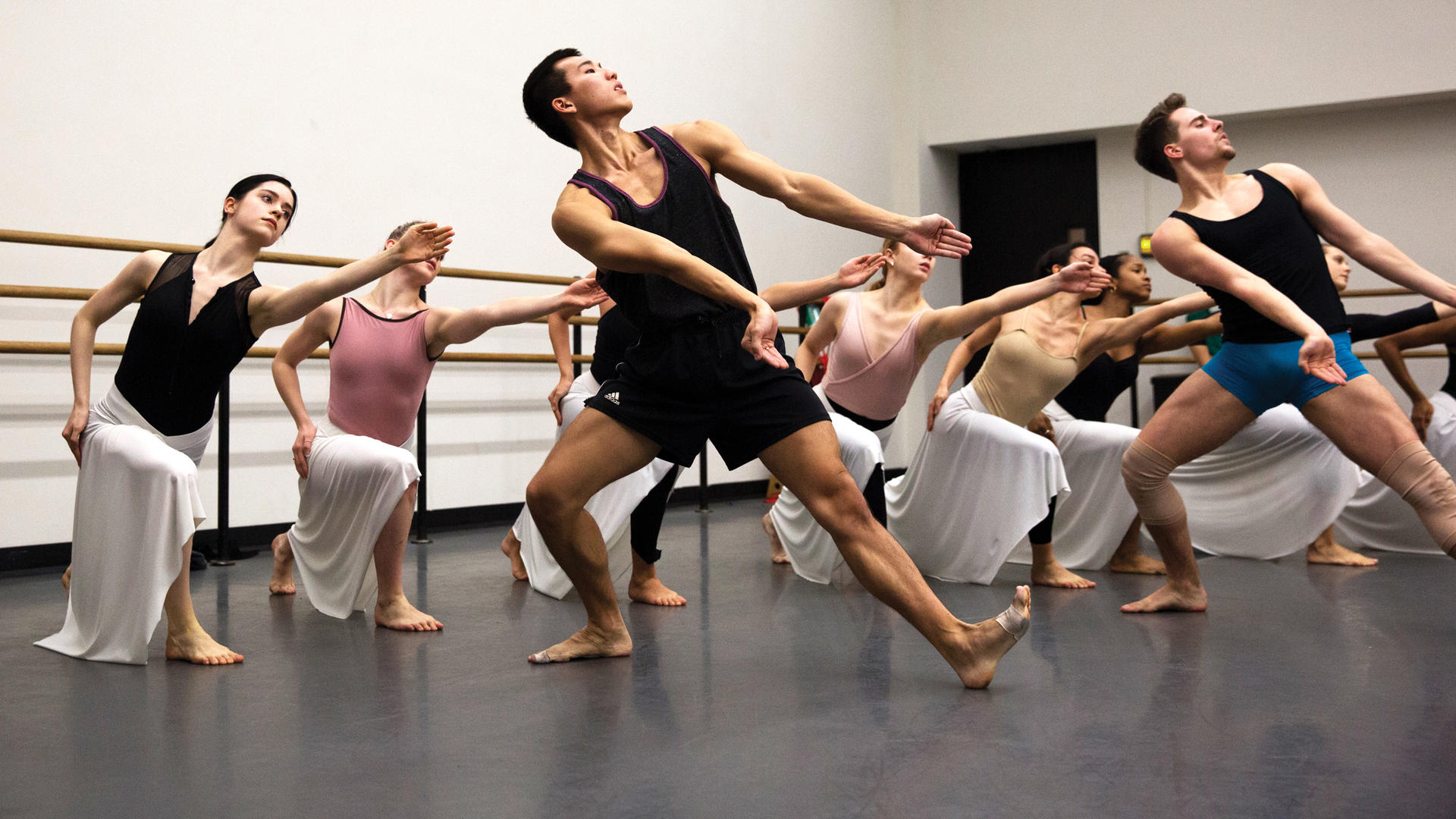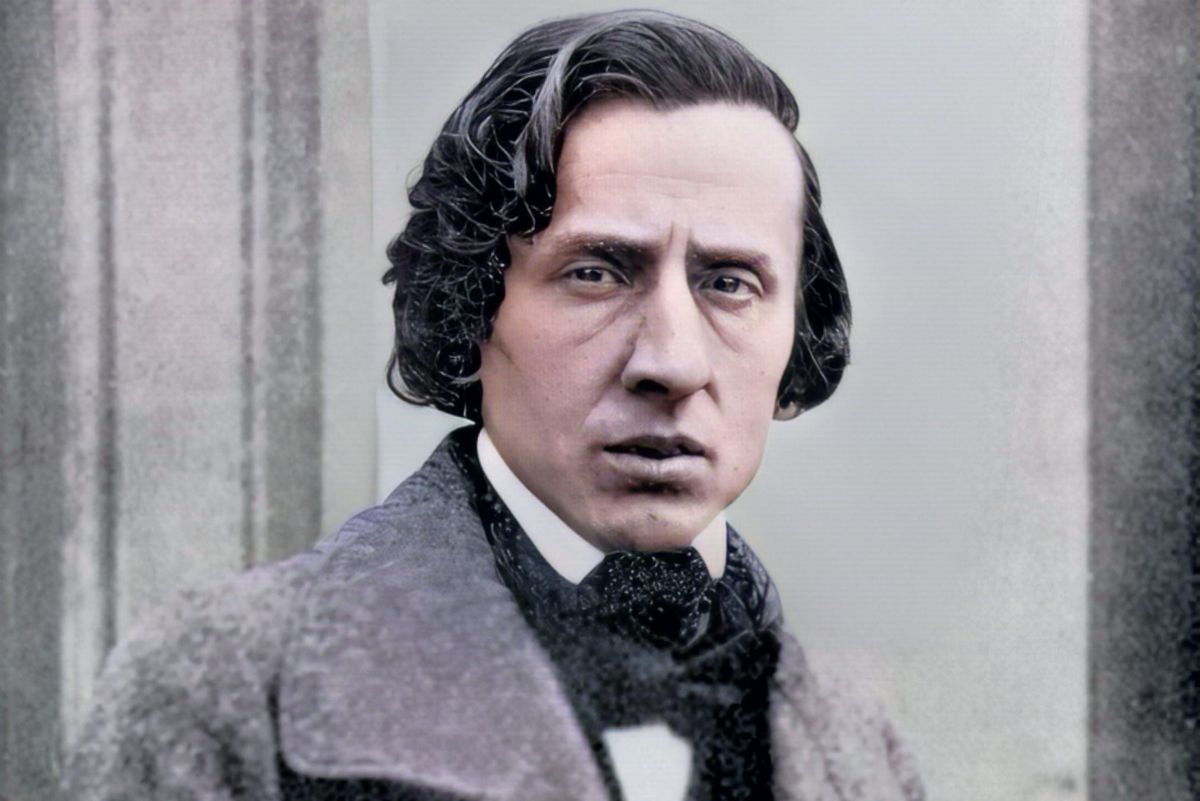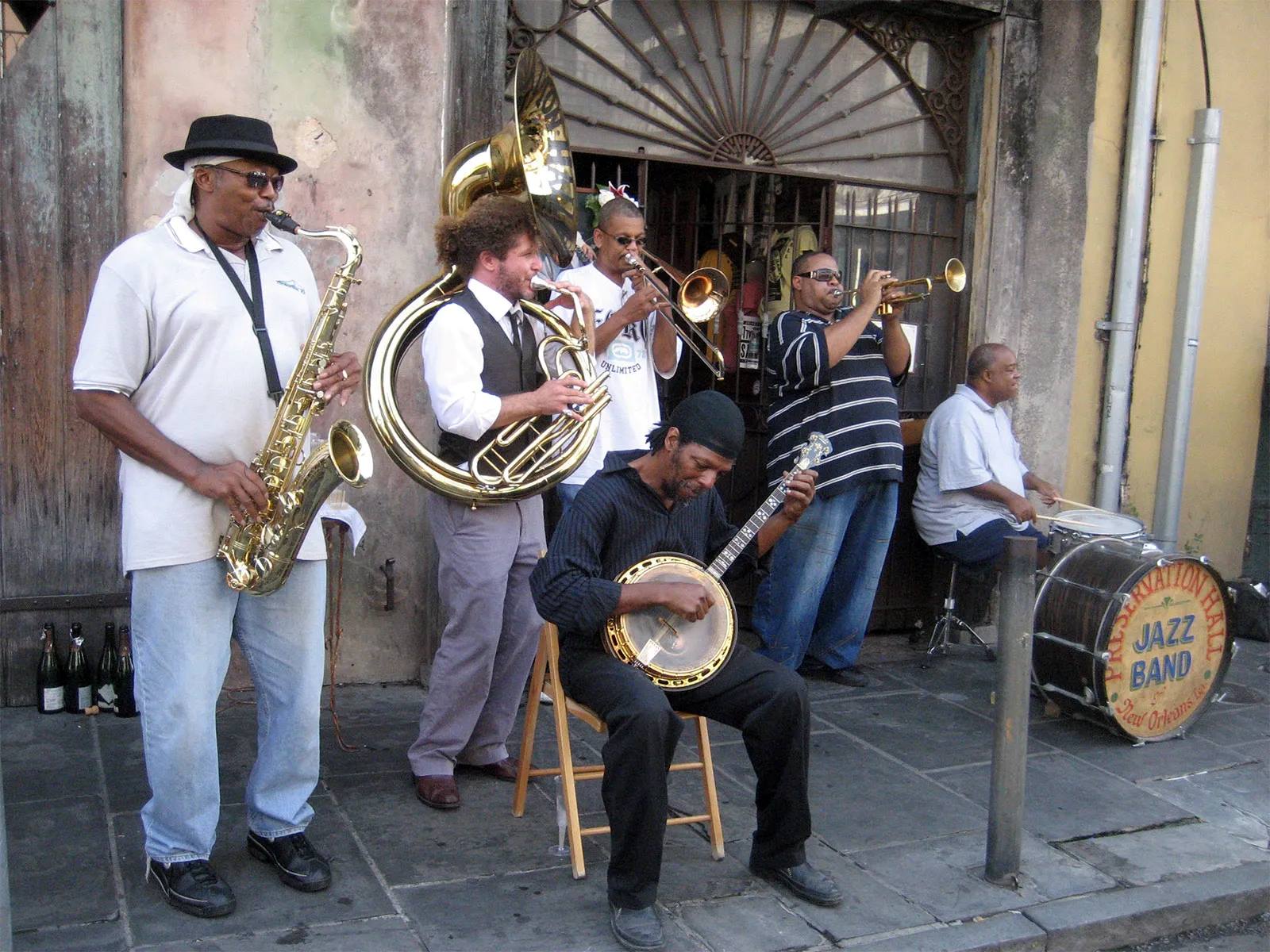Home>Events & Info>Ballet>What Is The Most Popular Ballet


Ballet
What Is The Most Popular Ballet
Modified: January 22, 2024
Discover the most popular ballets and delve into the enchanting world of dance. Explore the history, techniques, and iconic performances of ballet.
(Many of the links in this article redirect to a specific reviewed product. Your purchase of these products through affiliate links helps to generate commission for AudioLover.com, at no extra cost. Learn more)
Table of Contents
Introduction
Ballet is an exquisite form of dance that has captivated audiences around the world for centuries. Its graceful movements, intricate choreography, and stunning performances make it a truly mesmerizing art form. Whether you’re a ballet aficionado or simply curious about this elegant dance style, this article will provide you with an insight into the captivating world of ballet.
Originating in the Italian Renaissance courts of the 15th century, ballet has evolved over time to become a highly disciplined and prestigious dance form. It combines elements of both artistry and athleticism, requiring years of training and exceptional physical control.
Traditionally, ballet performances tell stories through dance, often drawing inspiration from classic works of literature or mythology. The dancer’s expressive movements, along with the accompanying music and elaborate costumes, transport audiences into a world of beauty and emotion.
Over the years, ballet has undergone various transformations, with different styles and techniques emerging. Today, there are two primary forms of ballet: classical ballet and contemporary ballet. While classical ballet adheres to the traditional techniques and repertoire, contemporary ballet explores new movements and approaches, incorporating elements from other dance genres.
Ballet has also gained immense popularity through the work of renowned ballet companies around the world. These companies, such as the Paris Opera Ballet, the Royal Ballet in London, and the American Ballet Theatre, showcase exceptional talent and bring the magic of ballet to stages worldwide.
In this article, we will explore some of the most popular ballets performed by these esteemed companies. From the enchanting tale of “The Nutcracker” to the tragic romance of “Swan Lake,” these ballets have captured the hearts of audiences for generations.
So, whether you are a seasoned ballet enthusiast or new to the art form, get ready to embark on a journey through the enchanting world of ballet, where beauty, grace, and storytelling converge.
History of Ballet
Ballet has a rich and fascinating history that dates back to the Italian Renaissance courts of the 15th century. It originated as a form of entertainment during lavish events and celebrations, where dancers would perform intricate and stylized movements.
During the 16th and 17th centuries, ballet began to evolve and gain popularity in France. King Louis XIV, often referred to as the “Sun King,” was a passionate supporter of ballet and played a significant role in its development. He founded the Académie Royale de Danse, which laid the foundation for formal ballet training and established the first professional ballet company.
In the 18th century, ballet underwent significant changes with the development of “pointe work,” which allowed dancers to dance on the tips of their toes. This technical advancement added a new level of grace and elegance to ballet performances. It was during this time that some of the most famous classical ballets, including “La Sylphide” and “Giselle,” were created.
The 19th century is often referred to as the “golden age” of ballet. This period witnessed the rise of ballet as a popular art form, with the creation of legendary ballets such as “Swan Lake” and “The Nutcracker.” Choreographers such as Marius Petipa and composers like Pyotr Ilyich Tchaikovsky played instrumental roles in defining the classical ballet repertoire that we know today.
Throughout the 20th century, ballet continued to evolve and break new ground. Choreographers like George Balanchine introduced neoclassical ballet, which blended classical technique with a more abstract and contemporary approach. The avant-garde movement of twentieth-century ballet pushed the boundaries of what was considered acceptable in terms of movement and expression.
Today, ballet’s rich history continues to inform and inspire dancers and choreographers. It is a testament to the enduring beauty and timeless appeal of the art form. Ballet companies and schools all over the world continue to train and produce talented dancers who carry on the tradition while incorporating modern influences.
The history of ballet is a testament to its enduring legacy as an art form that combines athleticism, artistry, and storytelling. From its humble beginnings in the Italian courts to the grand stages of the world’s most prestigious theaters, ballet has captured the hearts and imaginations of audiences for centuries.
Classical Ballet
Classical ballet is the foundation of the ballet art form, known for its precision, technique, and timeless repertoire. It represents the traditional style of ballet that originated in the 18th and 19th centuries and has since become synonymous with the elegance and grace associated with ballet.
Classical ballet is characterized by its adherence to specific technical principles, including turnout, pointed toes, and a strong emphasis on balance and control. Dancers train rigorously to attain the strength and flexibility necessary to execute the intricate movements with finesse.
One of the most iconic aspects of classical ballet is the use of the tutu, a voluminous skirt worn by female dancers that adds an ethereal quality to their movements. The elaborate costumes, along with exquisite sets and lighting, contribute to the visual spectacle of classical ballet performances.
Classical ballet repertoire consists of legendary ballets such as “Swan Lake,” “The Sleeping Beauty,” “Giselle,” and “Don Quixote,” which have been performed and cherished for generations. These ballets often tell timeless stories of love, tragedy, and fantasy, with the dancers seamlessly blending athletic prowess and artistic expression to bring the narratives to life.
Classical ballet technique requires years of diligent training, starting from a young age. Dancers must master the basics of ballet, including the five positions of the feet, various turns, jumps, and intricate footwork. The rigorous training helps dancers develop the strength, flexibility, and discipline necessary to execute the demanding choreography of classical ballets.
Classical ballet continues to thrive and be celebrated by renowned ballet companies around the world. The Paris Opera Ballet, the Bolshoi Ballet, the Royal Ballet, and the American Ballet Theatre are just a few of the prestigious companies known for their exceptional mastery of classical ballet.
The enduring popularity of classical ballet can be attributed to its timeless elegance, technical precision, and ability to transport audiences to a world of enchantment. The mesmerizing combination of music, dance, and storytelling creates an immersive experience that continues to captivate audiences of all ages.
While contemporary ballet has gained prominence, Classical ballet remains the foundation from which all other ballet styles have evolved. It serves as a testament to the rich history and enduring beauty of the art form, continuously inspiring new generations of dancers and audiences alike.
Contemporary Ballet
Contemporary ballet is a dynamic and innovative style that pushes the boundaries of traditional ballet, incorporating elements of modern dance and other dance genres. It emerged in the mid-20th century as a response to the evolving artistic landscape and the desire to explore new movement possibilities and artistic expressions.
Unlike classical ballet, contemporary ballet is not bound by strict adherence to rigid techniques and traditional narratives. Choreographers in this genre have the freedom to experiment with movement, music, and storytelling, resulting in a more abstract and experimental approach.
Contemporary ballet often combines ballet’s grace and technique with fluid and unconventional movements. Dancers explore a wider range of motion, incorporating floor work, partnering, and improvisation, giving rise to a more organic and expressive style.
Contemporary ballet also embraces a broader range of music choices, from classical compositions to modern and electronic sounds. This openness to diverse musical styles allows choreographers to create unique and thought-provoking dance experiences.
Choreographers like Jiří Kylián, William Forsythe, and Crystal Pite have made significant contributions to the contemporary ballet repertoire. Their innovative choreography challenges traditional norms, encourages dancers to explore new physical possibilities, and pushes the boundaries of what is considered ballet.
Contemporary ballet companies, such as Nederlands Dans Theater, Les Ballets Jazz de Montréal, and Hubbard Street Dance Chicago, specialize in this genre, showcasing the versatility and creativity of contemporary ballet dancers.
Contemporary ballet is often characterized by its emotionally charged performances and narrative ambiguity, leaving room for individual interpretation. It explores a wide range of themes, from social issues to personal struggles, enabling dancers to connect with audiences on a deeply emotional and relatable level.
With its fusion of classical ballet technique, modern dance influences, and innovative choreography, contemporary ballet has gained popularity and continues to evolve as a vibrant and evolving art form.
It provides an avenue for dancers to explore their artistic range and push the boundaries of traditional ballet, infusing the art form with new ideas and perspectives. Contemporary ballet creates a platform for creativity, experimentation, and self-expression, ultimately challenging and expanding the possibilities of what ballet can be.
Famous Ballet Companies
Ballet companies around the world play a vital role in preserving and advancing the art form. These prestigious institutions showcase exceptional talent, perform renowned works, and contribute to the development of ballet as an art form. Here are a few of the most famous ballet companies that have made a significant impact on the world of ballet:
- Paris Opera Ballet: Established in 1669, the Paris Opera Ballet is one of the oldest ballet companies in the world. Known for its grandiose productions and technical excellence, the company has a rich history and has nurtured legendary dancers and choreographers. It continues to be at the forefront of classical ballet, showcasing traditional repertoire as well as bold and innovative works.
- The Royal Ballet: Founded in 1931, the Royal Ballet in London has become synonymous with excellence in ballet. It has a rich repertoire of classical and contemporary works, and its distinguished dancers and choreographers have shaped the art form significantly. The company performs at the Royal Opera House and has a global reputation as one of the leading ballet companies in the world.
- American Ballet Theatre: The American Ballet Theatre (ABT) is a renowned ballet company based in New York City. It is celebrated for its versatility, staging both classical ballets and contemporary works. With its impressive roster of dancers and innovative productions, ABT continues to inspire and captivate audiences worldwide.
- The Bolshoi Ballet: Based in Moscow, Russia, the Bolshoi Ballet is a world-renowned company known for its powerful and dramatic performances. Founded in 1776, it has a rich history and an extensive repertoire that encompasses both classical ballets and new commissions. The Bolshoi Ballet is revered for its exceptional technique, emotionally charged performances, and breathtaking stage productions.
- Stuttgart Ballet: The Stuttgart Ballet is a prominent classical ballet company located in Stuttgart, Germany. It was established in 1961 and quickly gained recognition for its exceptional dancers, daring repertoire, and commitment to innovation. The company is known for collaborating with groundbreaking choreographers and pushing the boundaries of ballet as an art form.
These are just a few of the many renowned ballet companies around the world. Each company contributes to the rich tapestry of ballet, preserving its traditions, and pushing its boundaries. Through their exceptional artistry, these companies inspire audiences and nurture the talents of future generations of dancers, ensuring the continued growth and relevance of ballet as a captivating and dynamic art form.
The Nutcracker
The Nutcracker is arguably one of the most beloved and iconic ballets of all time. Composed by Pyotr Ilyich Tchaikovsky and based on the story by E.T.A. Hoffmann, this enchanting holiday ballet has captivated audiences since its premiere in 1892.
The Nutcracker tells the story of a young girl named Clara who receives a magical nutcracker doll from her godfather on Christmas Eve. As the clock strikes midnight, Clara is transported to a world of fantasy and adventure, where toys come to life and she embarks on a magical journey.
The second act of the ballet takes place in the Land of Sweets, ruled by the Sugar Plum Fairy. Here, Clara encounters a variety of colorful characters, including the Nutcracker Prince, the Snow Queen, and the Arabian, Chinese, and Russian dancers. Each dance represents a different sweet or treat, delighting the audience with its stunning choreography and vibrant costumes.
The Nutcracker’s popularity can be attributed not only to Tchaikovsky’s beautiful and enchanting score but also to the enduring charm of the story. It captures the magic and wonder of the holiday season, appealing to audiences of all ages.
Year after year, ballet companies around the world stage productions of The Nutcracker, becoming a cherished holiday tradition for many families. The Nutcracker’s stunning choreography, intricate set designs, and breathtaking costumes create a visual feast, complementing the magical atmosphere of the ballet.
From the graceful and ethereal pas de deux between the Sugar Plum Fairy and her Cavalier to the captivating dances of the various sweets, The Nutcracker showcases the technical brilliance and artistry of ballet dancers. It demands precision, athleticism, and storytelling ability, making it a true test for any ballet company.
Since its premiere, The Nutcracker has evolved and been adapted by countless choreographers and ballet companies, each adding their unique touches to this beloved classic. While the ballet may differ in some aspects from production to production, the enchanting spirit and heartwarming story remain constant.
The success of The Nutcracker extends far beyond the ballet stage. The music has become synonymous with the holiday season, featuring prominently in concerts, film soundtracks, and even ice skating performances. Its iconic melodies, such as the “Dance of the Sugar Plum Fairy” and the “Waltz of the Flowers,” have become ingrained in popular culture.
Whether you have seen The Nutcracker live or enjoyed the music from the comfort of your home, this ballet continues to sprinkle joy and magic into the hearts of all who experience it. With its timeless story, breathtaking music, and stunning choreography, The Nutcracker remains a cherished treasure of the ballet world and a holiday tradition that brings happiness and wonder year after year.
Swan Lake
Swan Lake is a timeless masterpiece that has become one of the most famous and enduring ballets in the world. Composed by Pyotr Ilyich Tchaikovsky and premiered in 1877, Swan Lake tells the hauntingly beautiful story of Odette, a princess cursed by an evil sorcerer, Von Rothbart, to live as a swan by day and regain her human form only at night.
The ballet revolves around the tragic romance between Odette and Prince Siegfried. Siegfried falls deeply in love with Odette when he encounters her by the moonlit lake. Despite Rothbart’s attempts to deceive Siegfried using his daughter Odile, who resembles Odette, the prince remains loyal to his true love.
Swan Lake is renowned for its iconic dual role of Odette/Odile, which demands exceptional technicality and artistry from the ballerina performing it. Odette requires grace, vulnerability, and ethereal beauty as she embodies the delicate and pure white swan, while Odile demands seductiveness, precision, and fiery energy as the cunning and seductive black swan.
The ballet is celebrated for its mesmerizing choreography, including the famous “Dance of the Swans” with its synchronized movements and graceful formations. The dramatic pas de deux between Odette and Siegfried, filled with emotional intensity, is also a highlight of the ballet.
Swan Lake’s enduring popularity can be attributed not only to Tchaikovsky’s magnificent score but also to its profound exploration of themes such as love, betrayal, and the struggle between good and evil. The ballet’s enchanting music, combined with the exquisite choreography and storytelling, transports audiences into a world of beauty, sorrow, and redemption.
Over the years, Swan Lake has been reimagined and interpreted by various choreographers and ballet companies, resulting in different versions and variations of the ballet. While the core storyline remains intact, interpretations may differ in terms of choreography and staging, allowing for fresh nuances and artistic expression.
Swan Lake has captivated audiences worldwide, and its impact extends beyond the realm of ballet, inspiring artists, musicians, and filmmakers. The ballet’s spellbinding tale and exquisite movements continue to resonate with audiences, reminding us of the enduring power of love, the triumph of good over evil, and the longing for freedom.
Whether experienced as a live performance or through recordings, Swan Lake continues to captivate new generations, solidifying its position as a ballet masterpiece that stands the test of time. From its mesmerizing swan corps de ballet to its heart-wrenching story of love and sacrifice, Swan Lake remains an eternal jewel in the world of classical ballet.
Giselle
Giselle is a ballet masterpiece that has captivated audiences for over a century. Premiered in 1841, this romantic ballet tells the tragic story of a young village girl named Giselle who falls in love with a nobleman disguised as a peasant, only to discover his true identity and the consequences of their forbidden love.
Set in a quaint rural village, Giselle is known for its ethereal and hauntingly beautiful choreography. The first act introduces the innocent and delicate Giselle, who is loved by a group of suitors, unaware of the nobleman, Albrecht’s engagement to another woman. As the story unfolds, Giselle’s fragile heart is shattered, leading to her untimely death from a broken heart.
The second act takes place in a mystical forest inhabited by a group of vengeful spirits known as the Wilis. Giselle becomes one of them, condemned to join the Wilis in their eternal quest to dance men to death. It is in this act that the ballet showcases the renowned “White Act,” featuring the ethereal and melancholic movements of the Wilis, contrasted with Giselle’s undying love for Albrecht.
Giselle demands technical precision, emotional depth, and the ability to convey ethereal grace from the ballerinas portraying the title role. The delicate footwork, the gravity-defying jumps, and the floating quality of the movements all contribute to the ethereal atmosphere that permeates the ballet.
This ballet has a lasting legacy due to the emotional impact it has on audiences. Giselle captures the complexity of human emotions, from the blissful happiness of love to the anguish of heartbreak and ultimate forgiveness. Its themes of love, betrayal, forgiveness, and the supernatural appeal to a universal audience, transcending time and cultural boundaries.
Giselle has been interpreted by countless ballet companies and choreographers, each bringing their unique artistic vision to the classic. Various versions exist, with variations in choreography and interpretation of the characters, giving audiences the opportunity to experience different facets of the ballet’s story and emotion.
Throughout its rich history, Giselle has remained one of the most revered and cherished ballets, admired for its captivating storytelling, breathtaking choreography, and emotional depth. The ballet continues to be performed in prestigious theaters around the world, showcasing the talent and artistry of ballet companies and their dancers.
Whether experiencing Giselle for the first time or returning to its timeless beauty, the ballet’s haunting charm and tragic storyline resonate deeply within the hearts of audiences, leaving a lasting impression long after the final curtain falls.
Coppélia
Coppélia is a charming and whimsical ballet that has enchanted audiences since its premiere in 1870. With its delightful storyline, lively characters, and captivating choreography, Coppélia continues to be a beloved classic in the world of ballet.
The ballet tells the story of a young village couple, Swanilda and Franz, who become infatuated with a life-sized doll named Coppélia. Swanilda, suspecting that Coppélia might not be a real person, ventures into the mysterious workshop of Dr. Coppélius, the creator of the doll. There, she discovers a world of magic, love, and mischief.
Coppélia is known for its light-hearted and comedic tone, blending moments of humor with beautiful classical ballet technique. The colorful and lively ensemble dances, including the iconic “Dance of the Hours,” showcase the joy and energy of village life.
One of the highlights of Coppélia is the captivating character of Dr. Coppélius, a mysterious and eccentric inventor. His interactions with Swanilda and Franz provide moments of comedy and misdirection, as they playfully deceive him and the audience.
The ballet’s choreography beautifully balances classical ballet elements with character-driven movements, creating a dynamic and engaging stage production. The intricate footwork, graceful partnering, and expressive storytelling truly come to life during the enchanting wedding celebration in the final act.
Coppélia’s enduring popularity stems not only from its delightful storyline but also from its memorable score, composed by Léo Delibes. The music is filled with melodic charm and brings the characters and scenes vividly to life, enhancing the ballet’s whimsical atmosphere.
Throughout the years, Coppélia has been brought to life in various interpretations by ballet companies worldwide. Choreographers have added their own unique touches and nuances to the ballet, while still preserving the essence of its original charm.
Coppélia continues to captivate audiences of all ages with its timeless story, spirited characters, and magical atmosphere. Its blend of comedic moments, lively ensemble dances, and heartfelt pas de deux makes it a joy to watch for both ballet enthusiasts and newcomers to the art form.
With its enchanting narrative, delightful choreography, and unforgettable characters, Coppélia never fails to bring smiles and laughter to audiences, reminding us of the joy and wonder that ballet can bring.
Romeo and Juliet
Romeo and Juliet is a timeless ballet that brings William Shakespeare’s tragic love story to life through the expressive movements of dance. Created in 1935 by choreographer Sir Kenneth MacMillan, this ballet adaptation has become a staple in the repertoire of many ballet companies around the world, captivating audiences with its passionate storytelling and beautiful choreography.
The ballet follows the fateful romance between the young lovers, Romeo and Juliet, who come from feuding families in Verona, Italy. From their first meeting at a grand ball to their secret marriage and heart-wrenching tragedy, their love story unfolds amidst a backdrop of family conflicts, duels, and mistaken identities.
Romeo and Juliet showcases the emotional depth and technical prowess of the dancers portraying the iconic roles. The pas de deux between Romeo and Juliet, filled with tender moments of intimacy and breathtaking lifts, reveal the intensity and purity of their love. The ballet demands not only exceptional technique but also the ability to convey the range of emotions, from the euphoria of newfound love to the anguish of separation and loss.
The ballet’s evocative score, composed by Sergei Prokofiev, adds depth and richness to the storytelling, enhancing the tragic atmosphere and emotional impact of the narrative. The music reflects the passion, turmoil, and tender moments of love, perfectly complementing the choreography on stage.
Romeo and Juliet’s timeless themes of love, fate, and the power of family resonate with audiences across cultures and generations. The ballet transcends language barriers, allowing the universal emotions of the story to touch the hearts of spectators worldwide.
The sets and costumes in Romeo and Juliet vary across productions, each bringing a unique visual interpretation of Verona and its characters. From opulent ballrooms to moonlit gardens and dramatic dueling scenes, the ballet’s design elements contribute to the overall ambiance and atmosphere of the performance.
While Romeo and Juliet has been adapted and choreographed by different artists, Sir Kenneth MacMillan’s interpretation remains a cornerstone in the ballet world. His masterful storytelling, combined with the powerful music and expressive dance, has made his version a beloved and widely performed rendition of this tragic tale.
Romeo and Juliet continues to be a testament to the enduring power of love, the destructive nature of feuds, and the devastating consequences of fate. Its poignant and timeless narrative, brought to life through the beauty of ballet, leaves a lasting impact on those who witness its tragic unfolding.
Conclusion
Ballet is an art form that transcends time and captivates audiences with its beauty, grace, and storytelling. From the classical elegance of Swan Lake to the whimsical charm of Coppélia, ballet has the power to transport us into a world of enchantment and emotion.
Through its rich history, ballet has evolved, embracing new techniques and styles while staying true to its traditional roots. The classical ballet repertoire showcases the precision and technical mastery of dancers, while contemporary ballet pushes boundaries and explores new artistic expressions.
Famous ballet companies around the world, such as the Paris Opera Ballet, the Royal Ballet, and the American Ballet Theatre, continue to nurture and showcase exceptional talent, ensuring the longevity and growth of the art form.
The timeless ballets, like The Nutcracker, Swan Lake, Giselle, and Romeo and Juliet, have become cultural touchstones, enchanting audiences across generations. These ballets bring together the elements of music, choreography, storytelling, and visuals to create an unforgettable theatrical experience.
As we witness the exquisite movements and emotional depth of ballet, we are reminded of the dedication, discipline, and passion that dancers pour into their craft. Countless hours of training, rehearsals, and physical exertion culminate in performances that transport us and elicit a range of emotions.
Ballet not only provides entertainment but also serves as a reminder of the beauty and resilience of the human spirit. It speaks to universal themes of love, loss, longing, and triumph, allowing us to connect with the dancers on a deeply emotional level.
Whether witnessing a classic ballet or being entranced by a contemporary piece, ballet invites us to suspend reality and immerse ourselves in a world of artistry and movement. It is a testament to the power of human creativity and the transformative nature of the performing arts.
So, whether you are a long-time ballet enthusiast or new to the world of dance, may you continue to be inspired and enthralled by the magic and beauty that ballet brings. Let the grace and elegance of ballet transport you to a world where dreams come to life and emotions are expressed through the poetry of movement.











